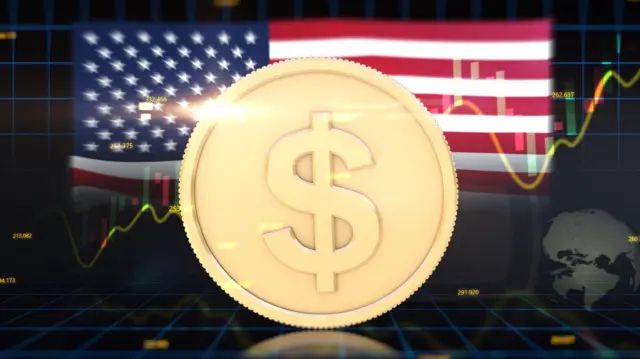The concept of credit limits has undergone significant transformation over the decades, shaping the financial landscape for consumers across the United States. Understanding the evolution of credit limits is essential for grasping their impact on consumer behavior, financial stability, and broader economic trends. This in-depth analysis explores the history of credit limits, their role in financial crises, the influence of technology, and their implications for future financial management.
Anúncios
The History of Credit Limits

The concept of credit limits has undergone significant transformation over the decades, shaping the financial landscape for consumers across the United States. Understanding the evolution of credit limits is essential for grasping their impact on consumer behavior, financial stability, and broader economic trends. This in-depth analysis explores the history of credit limits, their role in financial crises, the influence of technology, and their implications for future financial management.
The History of Credit Limits
Credit limits have played a crucial role in personal finance since the inception of credit cards. When credit cards first emerged in the mid-20th century, they were introduced with relatively low spending thresholds, designed to minimize financial institutions’ risks while offering consumers a convenient way to make purchases without carrying cash.
Anúncios
As consumer confidence in credit grew and financial institutions recognized the profitability of expanding lending capabilities, credit limits steadily increased. The latter half of the 20th century saw an aggressive expansion in the credit card industry, with financial institutions using higher credit limits as a competitive tool to attract customers. This shift contributed to greater consumer purchasing power, stimulating economic growth but also encouraging a culture of borrowing that led to rising levels of personal debt.
The 2008 Financial Crisis and Its Impact on Credit Limits
One of the most defining moments in the history of credit limits was the 2008 financial crisis. Before the crisis, many consumers had access to high credit limits, often exceeding their ability to repay, which contributed to unsustainable debt levels. As financial markets collapsed, lending institutions reassessed their risk exposure and responded by tightening credit policies.
Many consumers saw their credit limits reduced overnight, with lenders aiming to protect themselves from potential losses. This sudden contraction in credit availability affected consumer spending, exacerbating the economic downturn. The financial crisis underscored the importance of responsible lending practices and more rigorous credit assessments. Regulations such as the Credit Card Accountability Responsibility and Disclosure (CARD) Act of 2009 were introduced to promote transparency and protect consumers from predatory lending practices.
Technological Advancements and Modern Credit Assessment
The landscape of credit limits has been transformed by technological advancements. Traditional credit assessments relied heavily on static factors such as credit scores and income verification. However, the rise of big data, artificial intelligence, and machine learning has revolutionized the way financial institutions evaluate creditworthiness.
Today, lenders use sophisticated algorithms to analyze real-time financial behavior, enabling more accurate and personalized credit limit determinations. Factors such as spending patterns, payment history, employment status, and even social behaviors are incorporated into credit assessments. This dynamic approach allows lenders to adjust credit limits proactively, offering consumers more flexibility based on their evolving financial circumstances.
Additionally, fintech companies have introduced alternative credit-scoring models that provide access to credit for individuals with limited traditional credit histories. By analyzing cash flow data, bill payment histories, and other financial behaviors, these models help expand credit access to underserved populations.
The Psychological and Financial Impact of Credit Limits
Credit limits significantly influence consumer behavior, affecting spending habits, financial planning, and debt accumulation. High credit limits can create a sense of financial security, allowing consumers to make large purchases and manage unexpected expenses. However, they can also lead to excessive borrowing and debt accumulation if not managed responsibly.
The psychological effect of high credit availability often leads consumers to view their credit limit as an extension of their income rather than a financial tool that requires disciplined use. This perception can result in over-reliance on credit, ultimately leading to financial strain when repayment obligations become unmanageable.
On the other hand, low credit limits can restrict financial flexibility and make it challenging for consumers to handle emergencies. They may also impact credit scores, as credit utilization—the ratio of credit used to available credit—is a key factor in determining a consumer’s creditworthiness. Keeping credit utilization low is crucial for maintaining a strong credit profile and accessing better financial opportunities.
Financial Literacy and Responsible Credit Management
Given the complexities of credit limits, financial literacy plays a vital role in helping consumers make informed decisions. Understanding how credit limits are determined, their impact on credit scores, and strategies for managing credit effectively is essential for maintaining financial health.
Key financial literacy initiatives include:
- Educating consumers on credit utilization: Maintaining a utilization ratio below 30% is generally recommended to avoid negative impacts on credit scores.
- Encouraging timely payments: Payment history is the most significant factor in credit scoring, and consistent, on-time payments help build a strong financial profile.
- Promoting responsible borrowing: Consumers should understand the risks of overextending credit and develop disciplined spending habits.
- Highlighting the impact of credit inquiries: Frequent credit applications can lower credit scores, so strategic planning is essential when seeking new credit lines.
Governments, financial institutions, and nonprofit organizations offer financial education programs to help consumers navigate credit management effectively. By increasing financial literacy, individuals can make smarter borrowing decisions and reduce the likelihood of falling into debt traps.
The Future of Credit Limits and Consumer Finance
The future of credit limits is being shaped by ongoing technological advancements, regulatory changes, and shifting economic conditions. Personalized credit assessments are expected to become more prevalent, allowing consumers to benefit from dynamic credit adjustments tailored to their financial behavior.
Artificial intelligence and blockchain technology are also poised to play significant roles in enhancing credit management systems. AI-driven analytics can provide deeper insights into financial behaviors, while blockchain technology may offer more transparent and secure credit reporting systems.
Additionally, the integration of open banking allows consumers to share their financial data securely with multiple institutions, enabling a more comprehensive assessment of creditworthiness. This trend could lead to fairer credit limit determinations and expanded access to credit for individuals with nontraditional financial backgrounds.
Regulatory changes will also influence the future landscape of credit limits. Policymakers continue to focus on ensuring responsible lending practices while balancing the need to provide consumers with financial opportunities. Economic factors such as inflation, employment rates, and global financial stability will play crucial roles in determining how credit limits evolve in the coming years.
Conclusion
Credit limits are a fundamental component of consumer finance, shaping spending behaviors, credit accessibility, and overall financial well-being. Their evolution—from the early days of credit cards to modern, technology-driven assessments—highlights the dynamic nature of financial systems.
Understanding credit limits is essential for consumers seeking to optimize their financial health. By practicing responsible credit management, staying informed about industry trends, and leveraging financial literacy resources, individuals can navigate the complexities of credit effectively.
As financial technology continues to advance and economic conditions evolve, the role of credit limits will remain pivotal in personal finance. Whether accessing new credit opportunities or managing existing debt, consumers must approach credit limits with strategic foresight, ensuring their financial choices align with long-term stability and growth. By taking a proactive approach to credit management, individuals can harness the benefits of credit limits while mitigating the risks associated with excessive borrowing and financial mismanagement.nts and embracing technological advancements, consumers can better prepare for the evolving landscape of credit limits. In this fast-paced financial environment, understanding and managing credit limits will remain a cornerstone of achieving and maintaining financial well-being.
